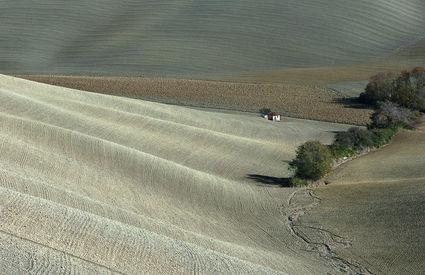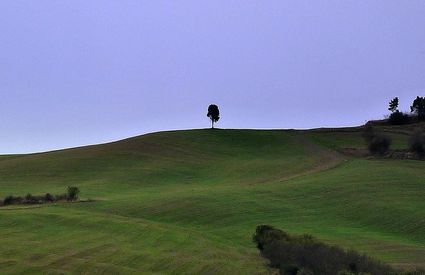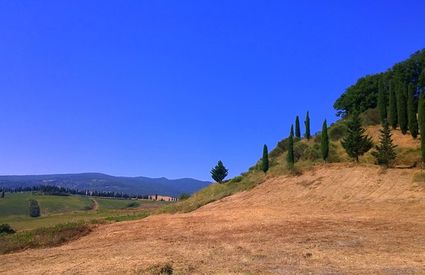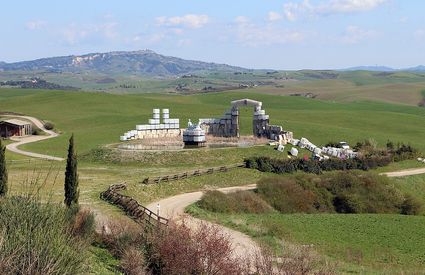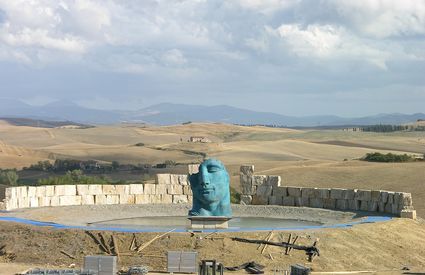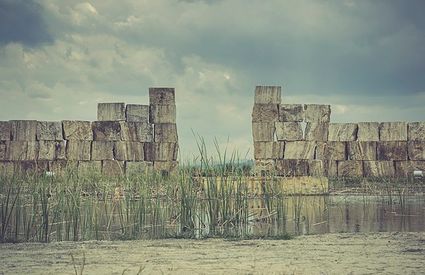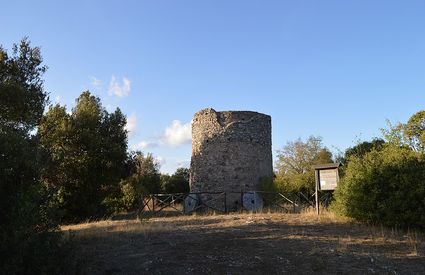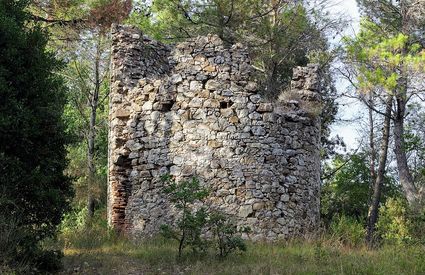Lajatico
Town of artists
The Teatro del Silenzio established by tenor Andrea Bocelli turned the spotlight on some of the most picturesque countryside near Pisa
Town of artists
The Teatro del Silenzio established by tenor Andrea Bocelli turned the spotlight on some of the most picturesque countryside near Pisa
Near Volterra
In the background stands Volterra, the mother of the Etruscan towns. In the foreground, especially in the spring, we can see the verdant hills surrounding Pisa, which seem to circle a place that’s sometimes a lake, sometimes a stage and sometimes an amazing living sculpture. We’re at the Teatro del Silenzio in Lajatico, a striking amphitheatre established by the singer Andrea Bocelli, who was born and still lives here when he’s not travelling the world.
The amphitheatre is the result of an ambitious project and a profound connection with the area. Built using the hillside and by moving huge quantities of land, the outdoor theatre is located about 15 kilometres from Lajatico. Visitors are taken by surprise as they come across the circular tank that’s usually filled with water, like a lake nestled in the hilly landscape. But it doesn’t look like that all the time. Sometimes, the man-made lake is emptied and turned into a theatre. After all, this was the original idea: the amphitheatre was meant to hold one show a year before returning to its usual silence and making way for the real star: the scenery. So, the water covers the stage and singing, music and memories of the event. Like a mandala.
Mitoraj to Pomodoro, a tribute to master sculptors
The earliest performances held at the Teatro del Silenzio, which began in 2006, were spectacular. Imagine incredible choreography in the night setting illuminated up by bands of coloured light and with travertine blocks in the background. All this was made unique thanks to gigantic sculptures by contemporary masters like Igor Mitoraj, Mario Ceroli, Arnaldo Pomodoro and Kurt Laurent Metzler.
All this beauty helped Lajatico to grab the spotlight, which prior to 2006 was merely a quiet town in the Pisa province with an enviable existence: it was one of the richest towns in Italy. Teatro del Silenzio continues to hold concerts and is still home to Andrea Bocelli.
When mills use the wind
The scenery helps us to discover the history of Lajatico. On a hilltop exposed to the wind, a few minutes from the hamlet of Orciatico, we can see the remains of two windmills. One dates to the late seventeenth century, where trade was flourishing. However, the local millers were unable to operate the grinding stones by water alone since there was a lack of water in the surrounding streams, especially in the summer. Somebody came up with the idea of harnessing the wind and these two circular towers were built in stone on the top of the hill. The towers had two floors: the cereals were stored at the bottom and the milling took place at the top. The blades could rotate in any direction and the energy proved a massive help to the millers who continued to use them until the early nineteenth century.


